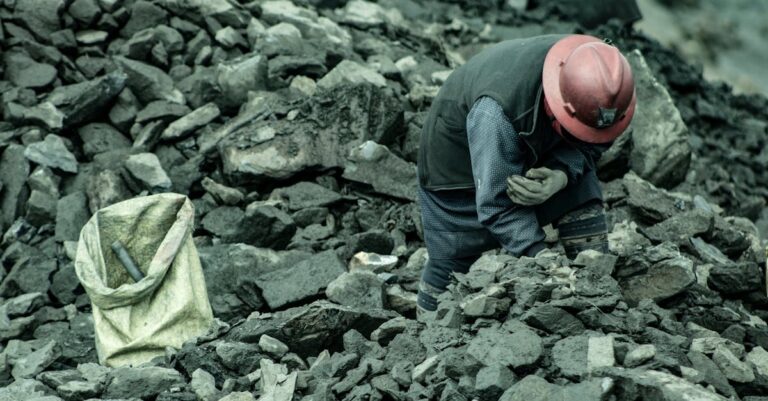
## Whispers of Stone
Dust devils danced across the cracked earth, mocking Elias’s efforts to coax a single stalk of corn from the parched soil. The Nebraska sun beat down, relentless, turning the air thick and heavy as a wool blanket. His father’s farm—or what was left of it—felt less like land and more like a stubborn expanse of regret.
“Another bust,” he muttered, kicking at the dry earth. A hawk circled overhead, its cry a lonely counterpoint to his frustration.
His daughter, Wren, fourteen and radiating a quiet intensity that always surprised him, approached carrying a chipped mug filled with lukewarm tea. “Found something,” she said, her eyes fixed on a patch of exposed earth at the far edge of what used to be the north pasture.
Elias squinted, wiping sweat from his brow. “What is it? Another rusted tractor part?”
“No,” Wren said, kneeling beside a dark patch of earth. “Something…different.”
He walked over, the familiar ache in his knees a constant reminder of years spent battling this land. The soil here was darker, almost black, unlike the pale dust that choked everything else. He knelt beside Wren, brushing away loose dirt with his calloused hand.
Underneath, a stone emerged—not the rough limestone that characterized their region, but a smooth, grey rock etched with intricate carvings. Geometric patterns intertwined with stylized depictions of animals he didn’t recognize, their forms alien yet compelling.
“What is it?” he asked, a tremor in his voice.
“I don’t know,” Wren breathed, tracing the lines with a cautious finger. “But it feels…old.”
The following weeks blurred into a feverish obsession. Elias, abandoning the failing crops, dedicated himself to uncovering more of the strange stone. Wren, a natural with numbers and languages, documented everything meticulously, her notebook filling rapidly with sketches and observations. They worked in silence, a shared purpose bonding them in a way their recent hardships hadn’t.
The stones weren’t isolated; they formed interlocking pieces, revealing a section of what appeared to be paving. They cleared more, exposing a breathtaking sight: perfectly fitted stone blocks forming walls, doorways leading into darkness.
“It’s a city,” Elias whispered, the words catching in his throat. “A whole city.”
News of their discovery spread quickly. First the local paper, then state archaeologists, then national news outlets descended upon the farm like a swarm of locusts. Dr. Eleanor Vance, a renowned expert in ancient civilizations, arrived with a team of specialists.
“This is…extraordinary,” Dr. Vance said, her voice hushed with awe as she examined a particularly well-preserved carving depicting a serpent coiled around a tree. “The craftsmanship, the symbolism…it’s unlike anything I’ve ever seen.”
They began excavating, meticulously brushing away centuries of dust and debris. The city—they tentatively named it “Silas,” after the nearby creek—was vast, sprawling beneath their feet. Buildings rose from the earth, adorned with carvings that told a story they couldn’t yet decipher.
“The architecture suggests a sophisticated understanding of engineering,” Mark Olsen, the team’s structural engineer, declared, pointing to a series of interlocking arches. “They used techniques we didn’t see implemented in this region for another thousand years.”
Wren, meanwhile, immersed herself in the carvings. She noticed patterns within the chaos—repeating symbols, recurring motifs.
“It’s a language,” she announced one evening, her eyes shining with excitement. “A complex one, but it’s a language.”
She began cross-referencing the symbols with known ancient languages—Sumerian, Egyptian, Mayan—but found no match. It was unique, utterly alien.
“There’s a cyclical element to everything,” she explained to Elias one afternoon, showing him a series of carvings depicting the sun rising and setting, rivers flowing, trees blooming and withering. “Like they believed in cycles of destruction and renewal.”
Days turned into weeks, the rhythm of their lives dictated by the ongoing excavation. They found pottery shards, tools fashioned from obsidian and copper, evidence of a vibrant culture that had thrived here centuries ago.
One evening, deep within a subterranean chamber, Wren discovered something truly remarkable: a series of crystal orbs arranged in a circle. As she reached out to touch one, the chamber filled with an ethereal hum.
She stumbled back, a wave of dizziness washing over her. “Elias!” she cried, clutching her head. “I… I saw something.”
“Saw what?” he asked, rushing to her side.
“Images,” she whispered, her voice trembling. “A vast landscape…lush and green…”
The images lingered in her mind, vivid and undeniable. A stark contrast to the arid wasteland that surrounded them now.
Dr. Vance, skeptical but intrigued by Wren’s claims, ordered a geological analysis of the surrounding area. The results were astonishing.
“The data indicates a dramatic shift in climate,” she announced at the next team meeting. “Approximately two thousand years ago, this region experienced a period of intense rainfall and vegetation growth…followed by a prolonged drought. A catastrophic ecosystem shift.”
The discovery of Silas wasn’t just an archaeological find; it was a window into a lost world, a stark reminder of the fragility of civilization. But Silas offered more than just historical data; it held a potential solution to their present-day struggles.
“The irrigation system,” Mark Olsen said, examining a series of intricate channels carved into the stone. “It’s remarkably advanced. They harnessed underground springs and directed water with incredible precision.”
“Could we adapt it?” Elias asked, his eyes fixed on the ancient stone channels.
“Potentially,” Dr. Vance replied thoughtfully. “It would require significant modification, but the principles are sound.”
The prospect of revitalizing their farm, their community, filled them with a renewed sense of hope. But as they delved deeper into Silas’s secrets, they uncovered a more complex and unsettling truth.
One evening, Wren discovered a hidden chamber beneath what appeared to be the city’s central plaza. Inside, she found a massive stone tablet covered in intricate carvings.
She spent days translating the tablet’s message, painstakingly deciphering the ancient language. The translation was chilling.
“It’s a prophecy,” she announced to Elias and Dr. Vance, her voice barely audible. “A warning.”
The tablet described a cyclical pattern of prosperity and devastation, a repeating cycle that Silas’s people believed was inextricably linked to the earth’s natural rhythms.
“They tried to control it,” she continued, her eyes filled with a profound sadness. “They built Silas as an act of defiance against the natural order, attempting to manipulate the climate through a series of rituals and engineering feats. But their efforts only accelerated the cycle, leading to their eventual downfall.”
The people of Silas hadn’t been victims of a random catastrophe; they had contributed to their own demise.
The revelation cast a shadow over the excitement of their discovery. Were they repeating Silas’s mistake, attempting to force nature to bend to their will?
“We need to approach this with caution,” Dr. Vance said, her face etched with concern. “We can learn from their successes, but we must also heed their warnings.”
Elias looked out at the sprawling city beneath his feet, a silent testament to human ambition and folly.
“Maybe the answer isn’t to control nature,” he said softly, “but to adapt to it.”
They decided to focus on sustainable practices – restoring native vegetation, implementing water conservation techniques inspired by Silas’s ingenuity but designed to work in harmony with the environment. It was a slower, more arduous process than attempting a large-scale irrigation project, but it felt right.
One evening, as the sun dipped below the horizon, casting long shadows across the excavated city, Elias and Wren sat on a stone bench overlooking the valley.
“It’s not just about saving our farm,” Wren said, tracing a pattern on the stone with her finger. “It’s about healing a broken connection.”
Elias nodded, looking out at the land, no longer seeing it as a symbol of failure but as a living testament to resilience.
“Silas gave us more than just answers,” he said softly, “It gave us a chance to start over.”
The excavation of Silas didn’t bring instant riches or magical solutions. It brought a deeper understanding, a renewed respect for the delicate balance of nature, and a shared commitment to building a more sustainable future. The echoes of Silas’s past resonated with their present, guiding them towards a path of collective healing and enduring hope.


